► Updated 2024 Tesla Model 3 review
► Benchmark electric car, now from £40k
► Rear-wheel drive tested in the UK
The Tesla Model 3 has been the great disruptor of the global automotive market. Seemingly from nowhere, it powered through the pandemic, became the bestselling electric car, and outflanked premium sector mainstays, such as the BMW 3-series, Audi A4 and Mercedes-Benz C-Class.
For 2024, it’s been improved, and aggressively re-priced to undercut all of its rivals, priced from £39,990 for the rear-wheel drive entry-level model.
Although it’s now the second-bestselling Tesla electric car after the Model Y (having been the second-bestselling car of any kind in 2021), it’s clear the smallest Tesla has real staying power. It remains a key part of the EV market even after newer rivals such as the Polestar 2, Hyundai Ioniq 6, Kia EV6 and BMW i4 have arrived on the scene.
For anyone shopping for a mid-size electric family car, the improved Project Highland Model 3 is impossible to ignore. As our full review will explain.
Group test: Tesla Model 3 versus the competition
What versions of the 2024 Tesla Model 3 are available?
There are two variants of the updated Model 3 on sale in 2024: the regular, rear-drive Model 3, plus the all-wheel-drive Dual Motor version called the Long Range. The Performance model is due to follow in 2024, and although Tesla prices change more often than we change our socks, it looks like the firm is being super-competitive for its un-optioned models:
- Tesla Model 3 Rear Wheel Drive: £39,990
- Tesla Model 3 Long Range: £49,990
In this review we cover:
> Changes for 2024
> Design
> Interior
> Autopilot
> Performance
> Range, specs and price
> Verdict
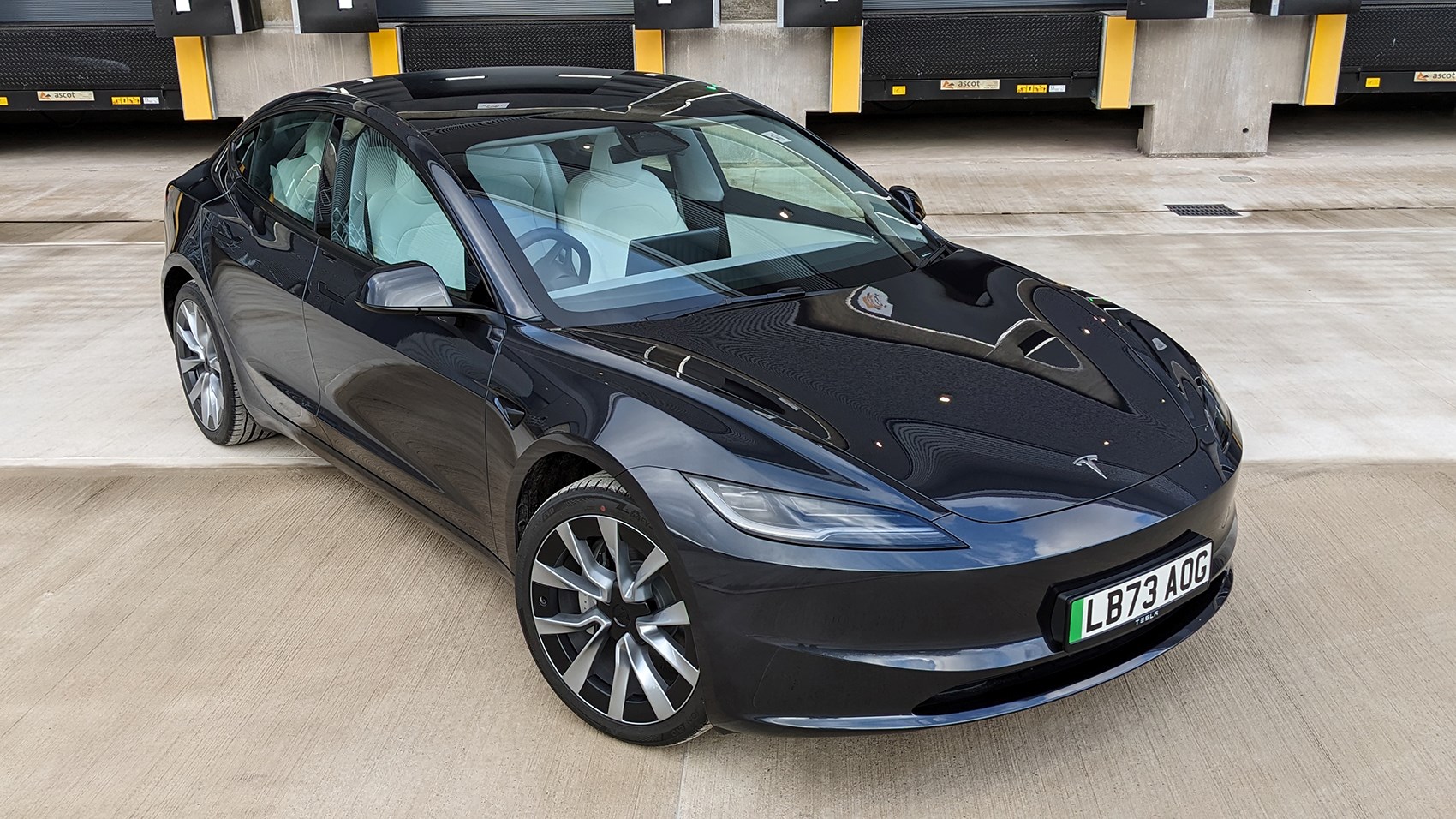
What has changed for 2024?
The Highland update sits somewhere between a fully-fledged facelift and a model year update. With more than two million Model 3s built since 2016, clearly the company didn’t need a rethink, and as such, it’s an evolutionary update. Therefore, it targets refinement and efficiency first and foremost.
The updated styling with shallower headlights brings with it an improvement in aerodynamics. The drag coefficient is now 0.219 – and with no changes to the batteries and motors, range has improved to up to 421 miles. Wind noise is also reduced by 30% according to Tesla. Other refinement-improvement changes include double-glazed acoustic glass, improved suspension bushes, seals and sound-dampening materials.
Inside you get a new steering wheel (with integrated indicator controls), redesigned, vented, seats that cool as well as warm, and an updated 15.4-inch centre screen with a larger viewable area than before. Also there’s new mood lighting, and an 8.0-inch screen for the rear-seat passengers.
Design and engineering
The Model 3 flew in the face of the car industry’s obsession to rush headlong into the arms of the lardy SUV (though the Tesla Model Y and Tesla Model X can sate that appetite, should you desire). Where it led, the Polestar 2, Hyundai Ioniq 6 and BYD Seal have followed – is the saloon coming back into fashion?
At 4694mm long and 2088mm wide, including door mirrors, the Model 3 is shorter than the established junior execs, such as the BMW 3-series and Audi A4. It’s also recognisably a Tesla thanks to its low nose, tapering rear and ample glasshouse, although the slimmer headlamps give it a more aggressive swagger than before.
It also has a conventional saloon rear end rather than a tailgate, and clever though the boot hinge purports to be, it loses a little practicality on this basis (helping the Model Y make a better case for itself). This is still a distinctive car. Anyone with even a passing interest will know what you’re driving.
Tesla Model 3 interior: a minimalist cabin
Even as you approach the interior, it’s apparent this car does things differently. There is no key, rather you use an RFID card (see below) or you can access the car via your smartphone.
In our testing, we ended up wafting the card up and down the B-pillar to find the secret spot rather too often – and then had to repeat the process inside, on the centre console, before the car would set off. This seems a backward step from the traditional keyless fob of the Model S (but may be circumnavigated if you place your pre-configured phone in the correct cradle and owners will quickly adapt).
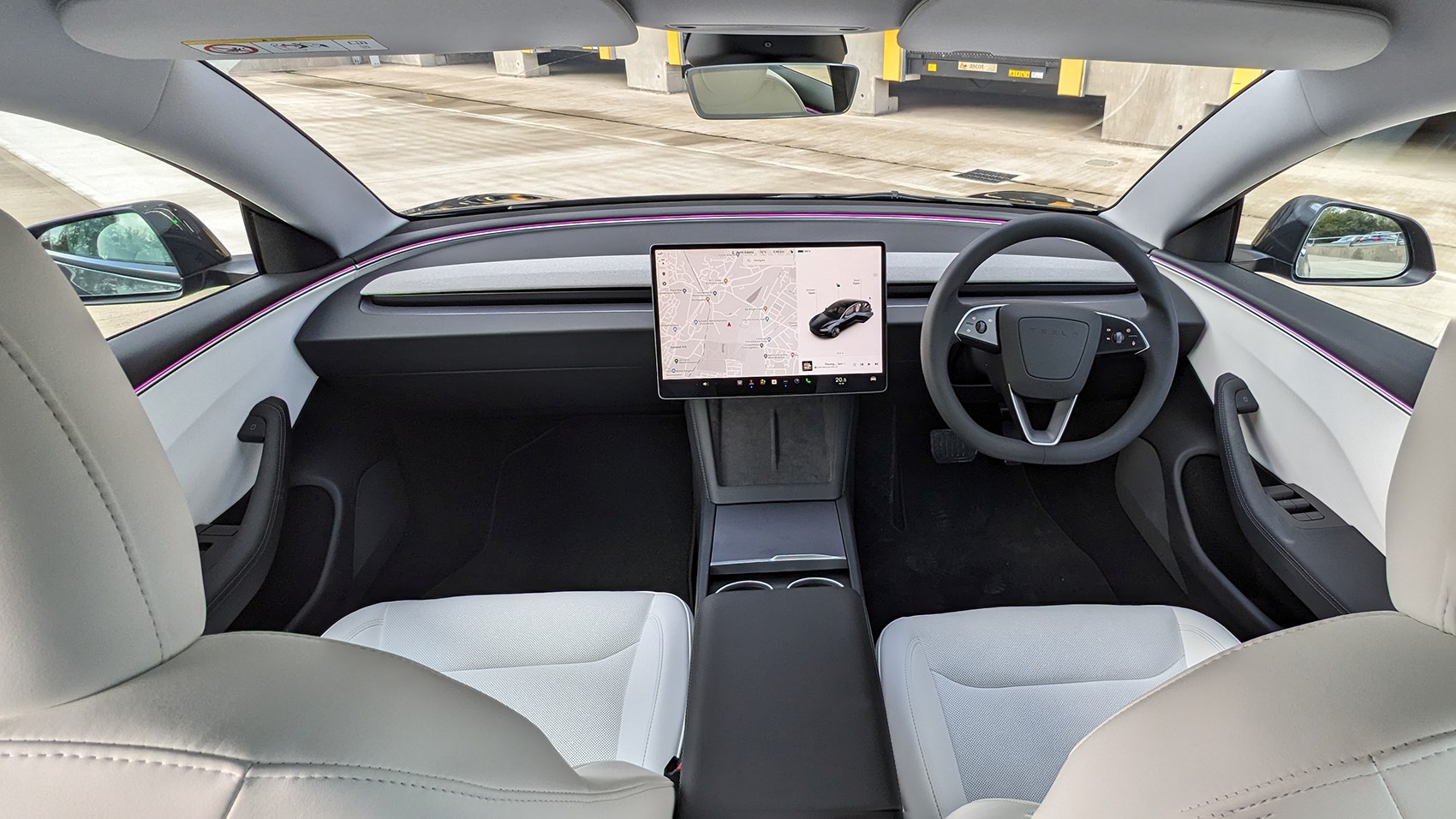
This is a roomy and minimalist cabin. The windscreen is panoramic, and the scuttle is low, meaning that the view forwards is clear and commanding, even if you don’t sit with the seat in a high position. That full-length glass sunroof makes it bright and airy inside, and the floor is flat.
There are no buttons on the centre console, just a pair of roller-knobs on the steering wheel, four window switches on the door and (buried on the seat) the usual electric backrest and squab adjusters. It’s uncluttered and lovely – if you like controlling everything from a touchscreen.
Happily, the updated 15.4-inch screen is pin-sharp, high-res and unerringly logical, with the best navigation system available. It’s brighter than before and as easy to use than ever, although you’ll need to familiarise yourself first if you want to know where everything is. And, yes, it’s still stubbornly not compatible with Apple CarPlay or Android Auto – and you won’t miss them either.
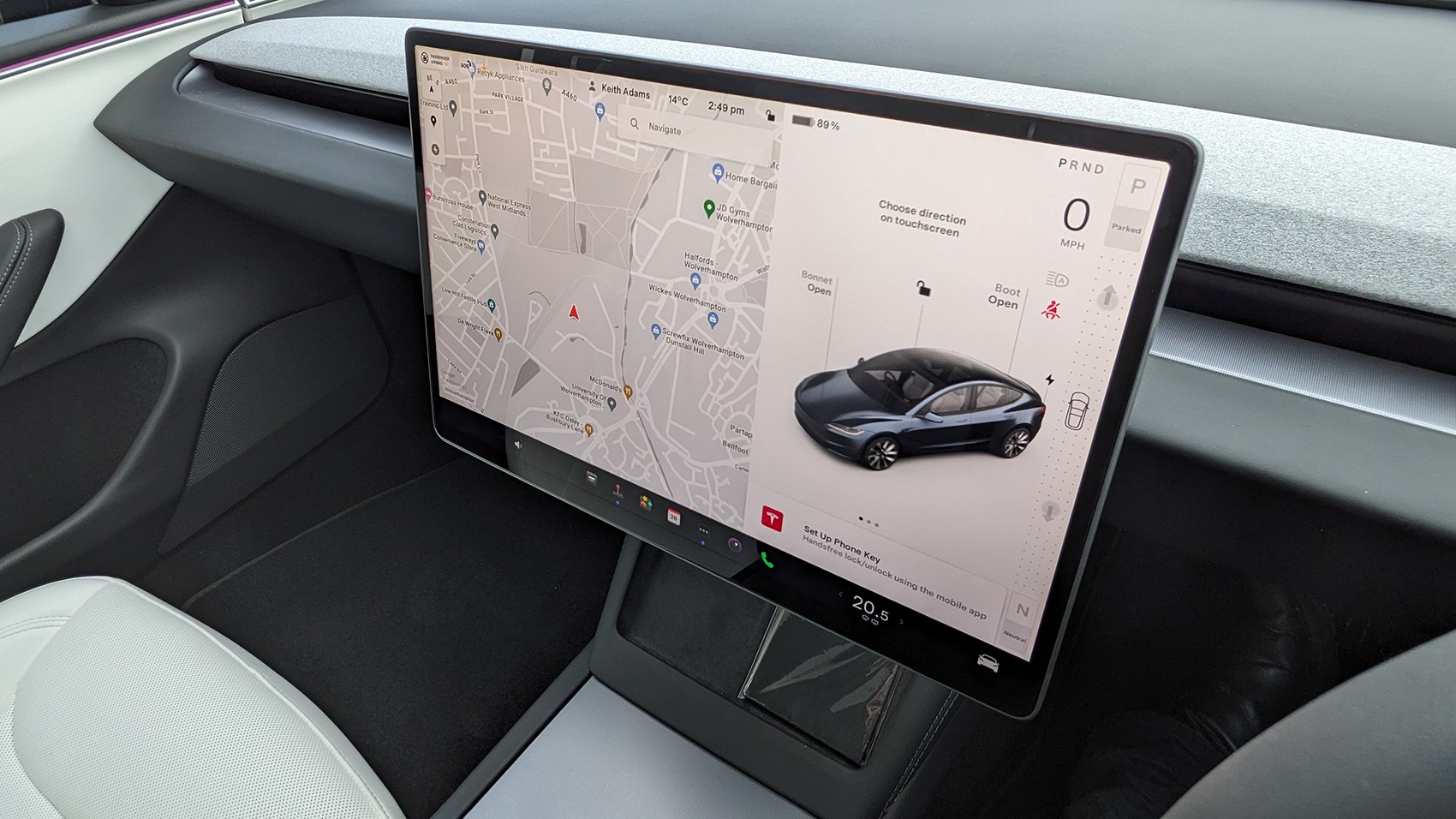
Below the screen you’ll find twin fixed inductive pads that allow wireless charging of your phone. However your phone just sits there staring at you which is annoying because you can see it flashing with notifications.
Unusually, a tall adult can fit comfortably in the rear middle seat, thanks to a cleverly sculpted centre console armrest with space for that fifth person’s feet. However, those in the back will find their heads close to the panoramic roof, and if the driver gets enthusiastic in corners, there’s a real risk of banged heads on the bulky cant rail above the window.
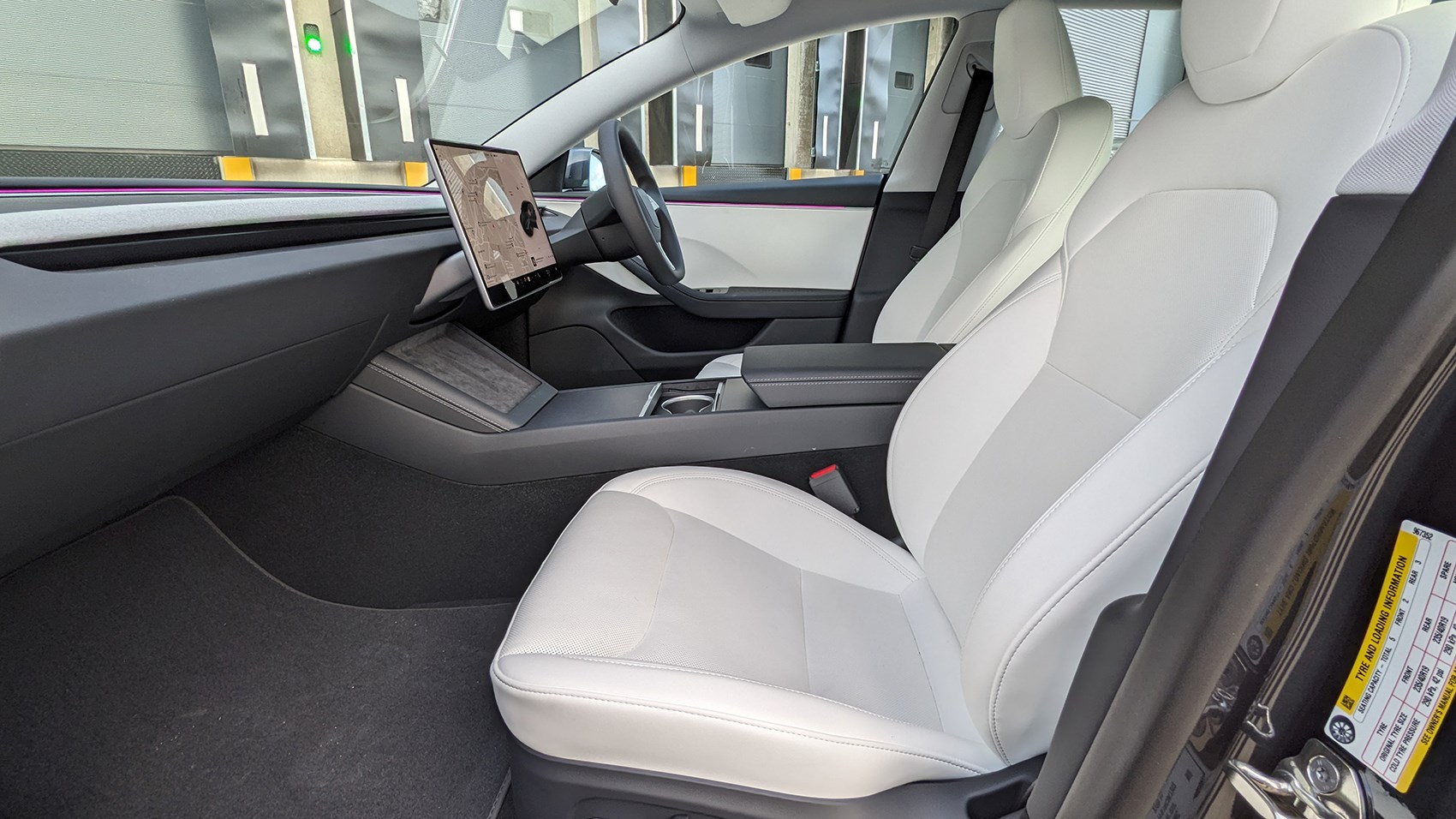
Note also the unusual, thin chromed door handles. No auto-pop-out theatrics here: you tap one end, nudging the rest of the handle out to open it manually. They open from the inside differently, too – with a simple door switch that looks just like an electric window button. Finally, there are the new wheel-mounted indicators – on the move, they work just fine and you don’t even think about them, aside perhaps from on roundabouts.
Quality is more than acceptable for the money, and has ramped up again in the 2024 model. It’s a step-change over the ageing Model S and we’d say that users in this price bracket will be quite comfortable with the trim and materials used, with slush-moulded, soft-feel materials deployed throughout.
But standards are high in this sector and it can’t quite live with the exquisitely built cabin of the admittedly much-more expensive BMW i4.
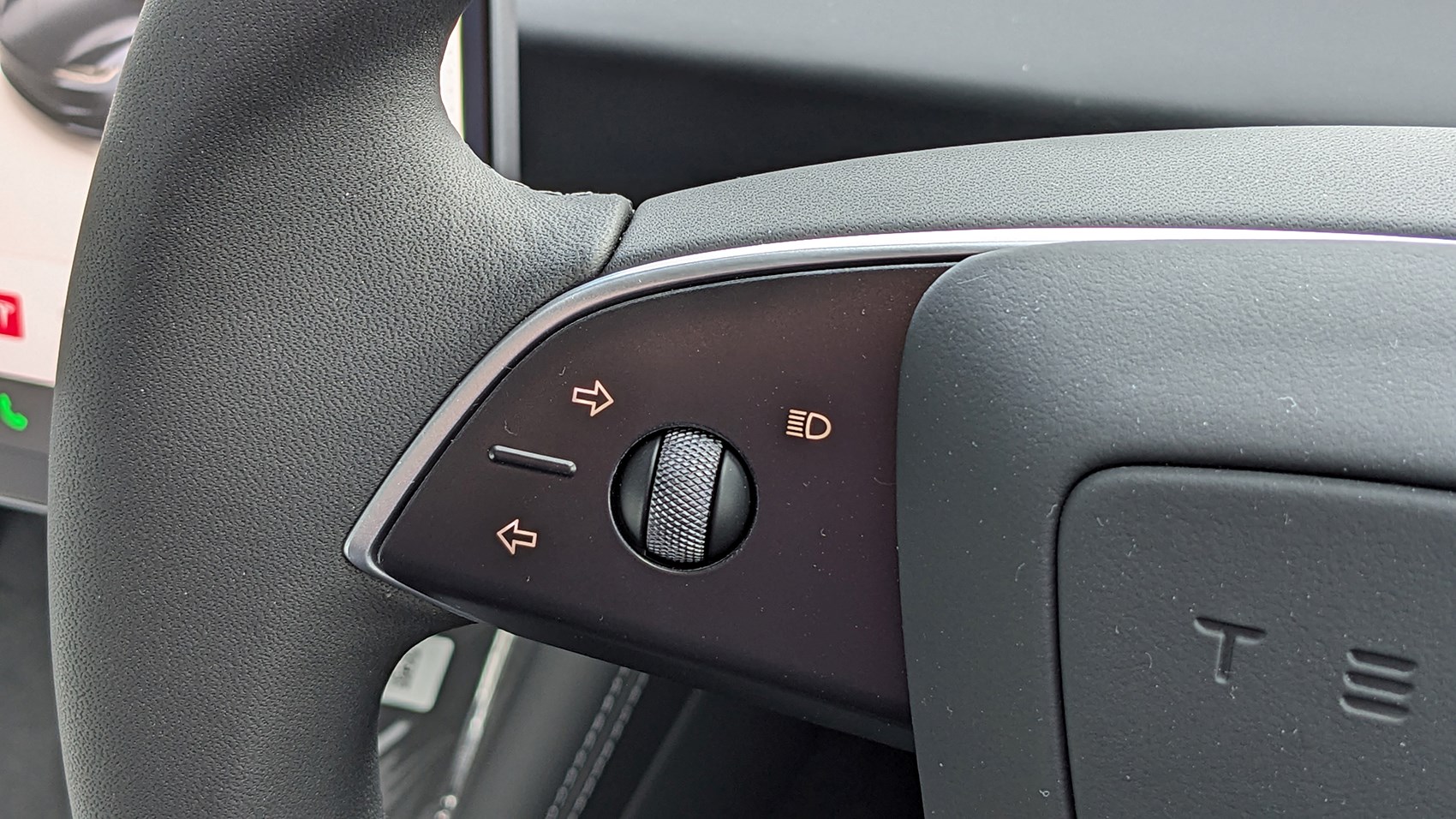
What’s it like to drive?
The Model 3 is near silent and more than acceptably fast – the disconnect between the lack of noise and the acceleraion takes time to get used to. You’ll quickly learn that driving flat-out everywhere isn’t good news for the battery range, so thankfully you should also find there’s satisfaction to be had in learning to be efficient.
The body rigidity is good, and overall refinement has taken a step forward over the older version. The suspension is well-damped and firm, and very good at absorbing road noise. A good test of this was on a concrete section of motorway near to Tesla’s new regional office in the Midlands – many cars roar disapprovingly on the M54, but the Model 3 remains acceptably peaceful, and certainly better in that regard than a Polestar 2.
Quick steering gives the Model 3 a pointy agility, impressive for an 1800kg saloon. You can tailor the steering weight to personal preference, but European tastes are probably most closely tuned to the firmest setting in Track Mode. It feels right-sized for the UK – a good compact shape that’s not too bulky for Britain’s busy roads. It also offers impressive agility for a saloon weighing not far off two tonnes.
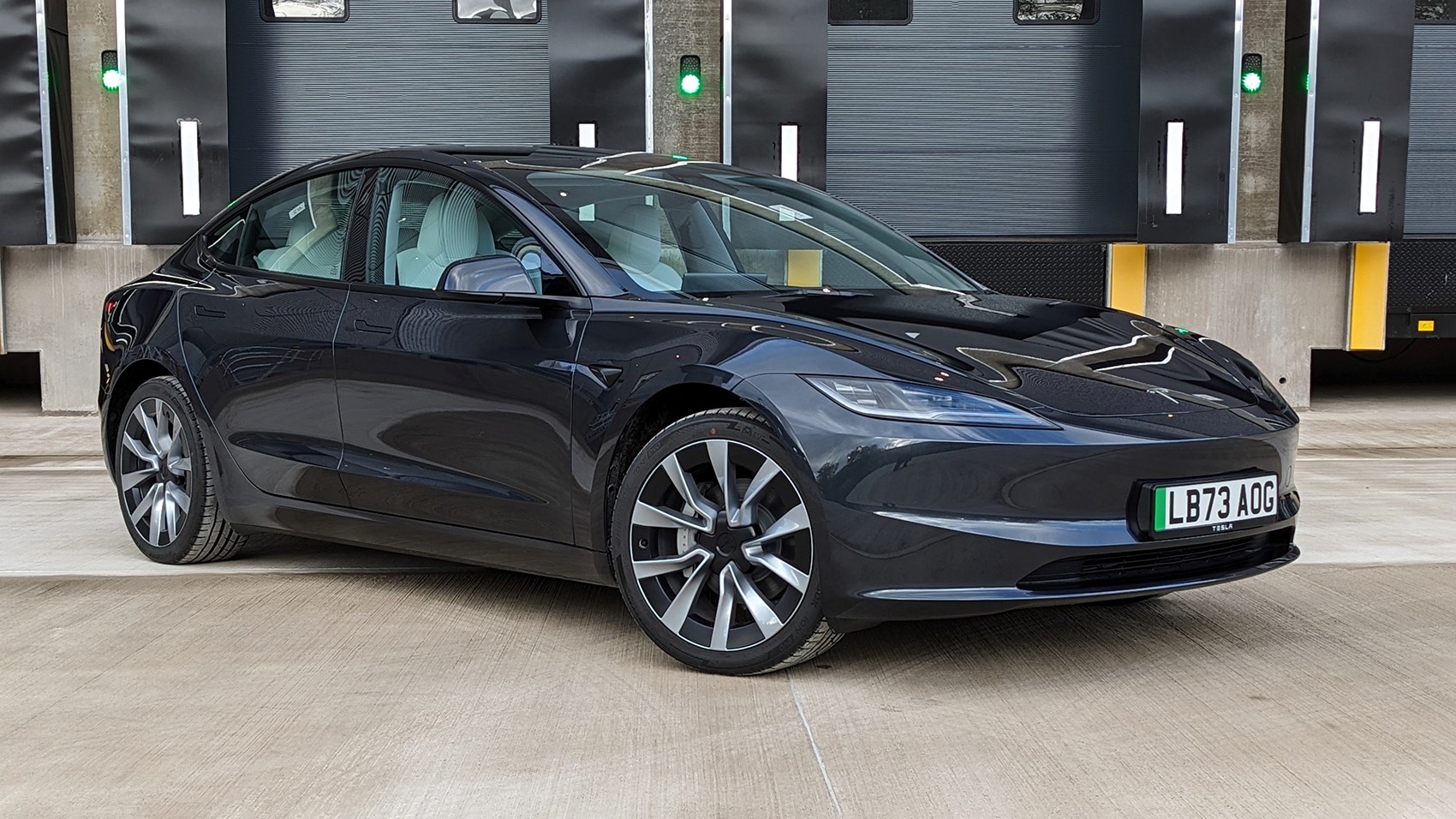
It’s also enjoyable to cruise around in, and the bursts of acceleration even the single-motor standard car is capable of will likely keep you smiling. The Dual Motor variant is quicker still, and comes with plenty of traction. Such is the torque available, you’d be unwise to take too many liberties in the wet, however.
We noted a few ergonomic inconveniences. The windscreen A-pillars are noticeably thick and the rather ugly steering wheel is chunky to hold. One quirky detail which grated was the shroud around the forward-facing camera at the top of the windscreen, which kept masking the view ahead every time we looked at the rear-view mirror.
What about Autopilot?
Designed for long, straight American freeways, we were interested to see how the Autopilot system performs on the UK’s congested and bendier motorways. On the whole, it works well, and is further improved for 2024 – and you can see that with each software update, the system becomes more intuitive, less nervy, and more capable of dealing with busy situations.
To operate it, you tap the right-hand scroll control on the wheel (once for adaptive cruise, twice for Autopilot), then just rest your hands on the wheel and guide the car. When you want to change lane, tap the indicator and wait for the car to gently ease you across the lanes. As for Autopiloting on UK motorways, it’s not perfect; this is a system designed to relax the driver and encourages delicate input, while maintaining full alertness on the road ahead.
Newbies will definitely need time to adapt to its sensitivity, and forgiveness for the times it applies the brakes for no apparent reason. As a semi-autonomous driving aid, it’s pretty much there for patient and sensitive UK and European drivers.
That’s expected in 2024, although Tesla hasn’t officially confirmed this yet. Motors and batteries are likely to be unchanged, but it will still be worth waiting for though, if face-melting acceleration is your thing. The original Performance felt every bit as fast as the 3.1sec 0-60mph claim, and was monumentally, addictively rapid, and our findings below are likely to stand.
We spent the day at Paul Ricard in 2019 to review the original Performance’s limits, both on track and at the skid pan. This was perfect to explore how the Performance made use of distributing the dual motors’ torque split, adaptive thermal controls, low centre-of-gravity, 48:52 weight distribution, Brembo performance brakes and bespoke Michelin tyres.
In Track Mode, it maximises the motors to turn the car, the brakes to make it faster in corners, the battery to store more electricity, and the radiators to stop it going pop. A combo that’s said to result in 5% faster lap times on any given circuit.
In practice, Track Mode certainly sharpens up the steering and turn-in gets even more aggressive. But you’re always aware of its hefty kerbweight – although it turns and steers crisply, the Model 3 will still understeer if you’re timid with the throttle or carry too much entry speed. And there’s still a fair bit of body roll to contend with.
Buying a Tesla Model 3 in the UK: range and specs
As outlined at this top of this page, Tesla currently offers two models in its UK range, with pricing (in October 2023) ranging from just under £40k to nearly £50k. There are few options to choose from, so you won’t rack up a massive bill beyond this, but you also won’t be able to personalise your Model 3 in the manner of more traditional rivals.
Be wary of future technology that’s set to be delivered via over-the-air update, such as the full self-driving capability option; you may end up paying for something you never actually receive. You can buy a Model 3 online as well as via a physical retailer, including having it delivered straight to your house. You will probably have to deal with a monster waiting list, either way, although some leasing companies are promising quicker delivery times.
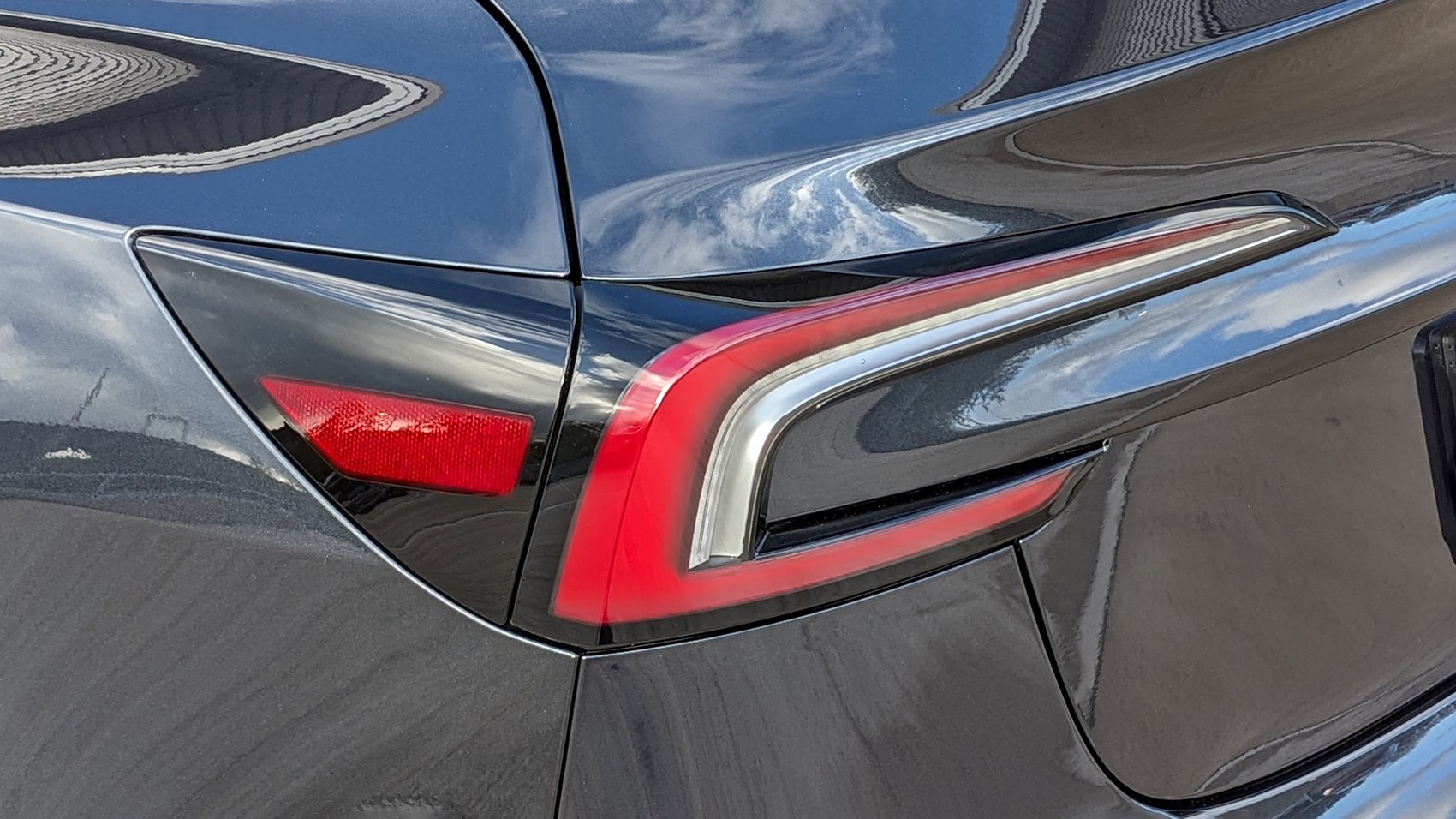
The Tesla Supercharger network now features more than 1000 charging points spread across over 100 locations throughout the UK, so long-distance driving in a Tesla should be entirely feasible for most drivers. Going further is just as easy – there are more than 12,000 Superchargers in Europe.
There are lots of other charging points available beyond Tesla’s own – check out Zap Map, for example – but it’s equally clear that the infrastructure is failing to keep up with the growth in electric vehicle sales. It’s still not as easy to run an electric car as it is a petrol or diesel model.
Still, Tesla quotes 150 miles of extra driving range in half an hour if you’re on a Supercharger; or 37 miles an hour of recharging on a dedicated home charger. As for three-pin charging – don’t bother, unless it’s an emergency and you have a lot of time on your hands.
The entry-level Model 3 Rear Wheel Drive has a WLTP driving range of 344 miles, the Long Range stretches this to 390-421 miles (depending on wheel choice), while we’ll have to wait until later in 2024 for the Performance model. In our experience, Teslas are much more likely to get close to those claims than many rival EVs.
Tesla Model 3: the CAR verdict
With the Project Highland updates for 2024, the Model 3 finds itself vying for pole position on the mid-sized EV grid. The combination of the Tesla Supercharger network, an impressive battery range, and stylish, idiosyncratic interior have been sharpened up by improved ride quality, lower noise levels, and better efficiency than before.
The less-than-ideal customer service reported by some owners still is an important point to consider, as trust is hard earned and easily lost. Tesla is investing massively in the UK, and is building an infrastructure to support its owners better. And that will be so important as it attracts the next tranche of buyers.
And what of the car? As always, the lack of a hatchback is a missed opportunity, and the ergonomics will spark debate and divide opinions. Otherwise, Tesla has usefully improved the product. Of its rivals, the BMW i4 is a sensational electric car, the Hyundai Ioniq 6 offers bonkers design, and the Kia EV6 is an awesome all-rounder, but as an overall ownership proposition, the Model 3 has nosed ahead of the lot.
And that’s before we take the lower list prices into account. Starting at less than £40k (around the price of a Vauxhall Astra Electric or Peugeot e-308), and with some very punchy leasing deals on offer, it looks like Tesla has given the legacy carmarkers something to think about yet again. You win, too, because as usable electric cars go, it doesn’t get much better than this.
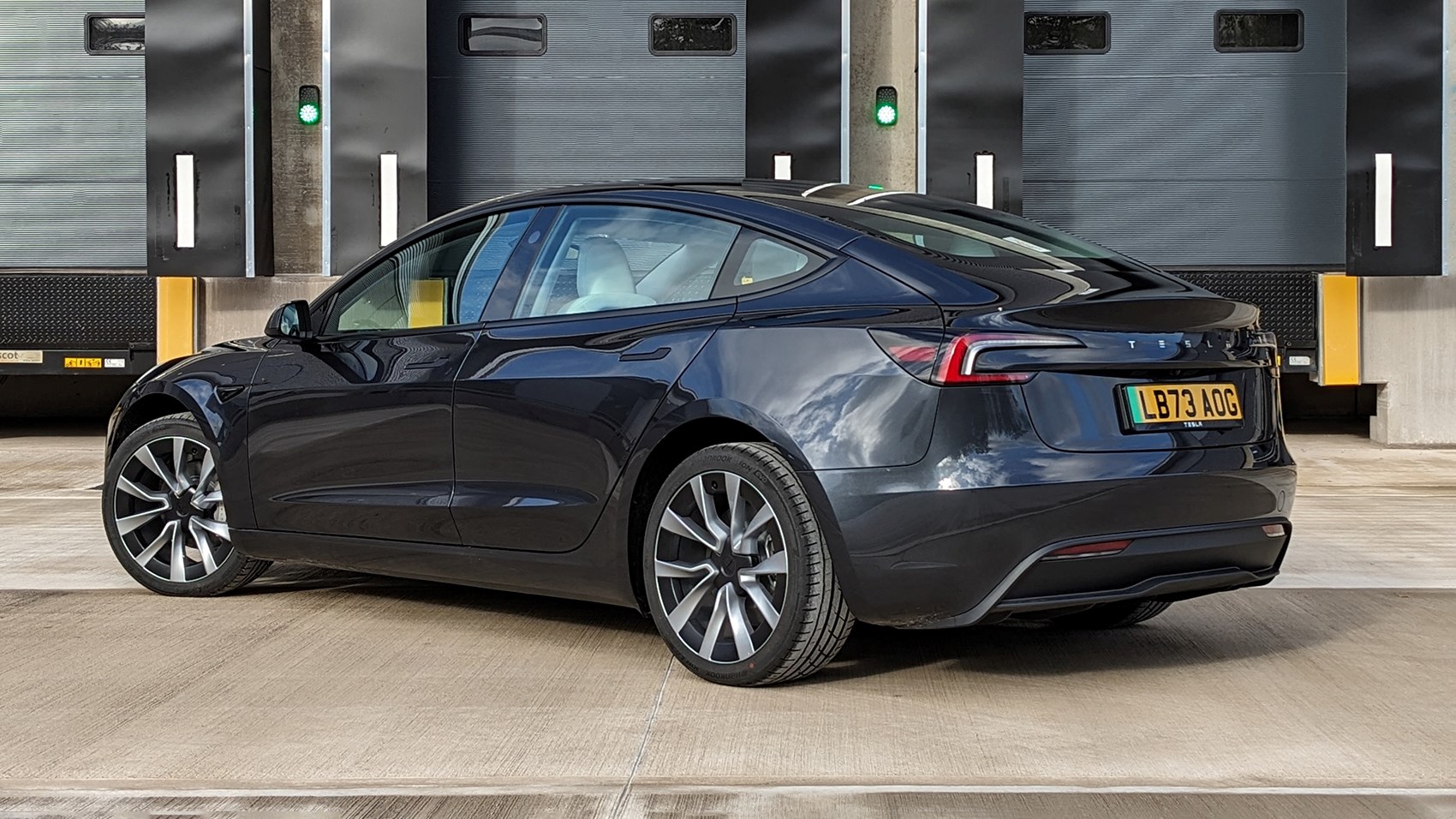
Specs below are for the Model 3 Rear Wheel Drive